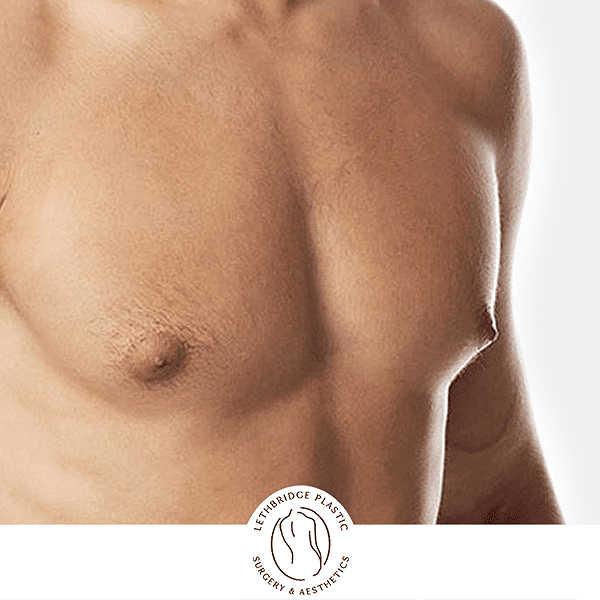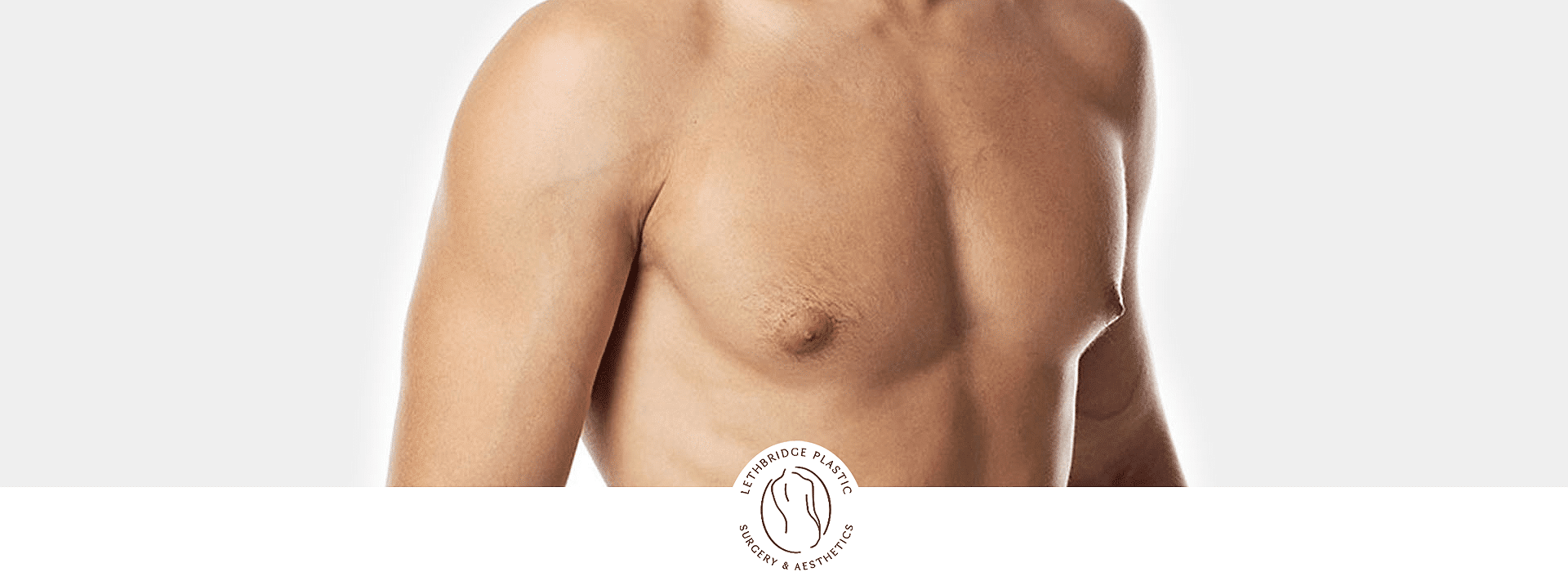Gynecomastia
Correction Surgery


What is Gynecomastia?
What is Gynecomastia?

Gynecomastia is the medical term used to describe enlarged male breasts, a condition that affects some 40% to 60% of men.
Male breast reduction, or gynecomastia surgery, is a surgical procedure designed to eliminate excess skin, fat and/or glandular tissue in the chest. It can also reduce puffiness of the nipples and areolae.
The medical community has had a difficult time identifying any specific underlying causes (or accompanying medical issues) for some men developing this condition. Some studies do demonstrate an increased incidence of gynecomastia in obese patients or those who regularly use certain drugs (anabolic steroids, spironolactone, Tagamet, marijuana and alcohol), but many sufferers may present the condition without the existence of these factors. Many men with gynecomastia experience diminished self-confidence and feel socially inhibited due to this condition.
The goal of male breast reduction treatment is to remove excess fat and glandular tissue (or, depending on severity, extra skin as well) from the enlarged breasts. The healing time for a given procedure varies between different patients.
FAQ: About Your Gynecomastia Surgery
FAQ: About Your Gynecomastia Surgery
Gynecomastia involves making an incision usually around the nipple in order to remove fat and/or glandular tissue from the breasts. Sometimes it is necessary to remove excess skin as well. In such cases, additional incisions are required. Dr. Secretan may recommend performing liposuction in conjunction with gynecomastia correction. This usually can be achieved by using the existing incisions.
The consultation, which typically lasts 45 minutes, will be your time to spend with Dr. Secretan, as well as the staff. We will discuss your goals and expectations and review with you the various options that exist in performing the procedure. Ample opportunity will be provided to ensure your personal comfort level with both the procedure and with us. Once you have decided to proceed with gynecomastia surgery, we will do our best to schedule your surgery as conveniently for you as possible.
Gynecomastia surgery risks include:
- Reactions to tape, suture materials, glues, topical preparations or injected agents
- Anesthesia risks
- Bleeding (hematoma)
- Blood clots
- Breast asymmetry
- Breast contour and shape irregularities
- Changes in nipple or breast sensation may be temporary or permanent
- Damage to deeper structures—such as nerves, blood vessels, muscles and lungs—can occur and may be temporary or permanent
- Deep vein thrombosis, cardiac and pulmonary complications
- Fatty tissue found in the breast might die (fat necrosis)
- Fluid accumulation (seroma)
- Infection
- Persistent pain
- Poor wound healing
- Possibility of revision surgery
- Unfavorable scarring
These risks and others will be fully discussed prior to your consent.
When you receive a quote for surgery from Dr. Secretan, all of the costs below are included in your quote which will enable you to know the exact payment required.
If you are considering having multiple cosmetic procedures done, speak with Dr. Secretan about the possibility of having them all done at once.
For patients whose insurance will not cover cosmetic procedures, there are financing options available. Often patients will use a credit card or a personal line of credit, however our clinic offers financing through companies like Medicard that specialize in financing for cosmetic procedures.
ANESTHESIA FEES
These fees cover the cost of the anesthetist, whose presence is required during and immediately after your surgery, and the anesthesia administered.
HOSPITAL OR PRIVATE SURGICAL FACILITY FEES
These fees cover the cost of where your surgery is scheduled to take place.
THE SURGEON FEES
In addition to your actual surgery, these fees also cover all pre-operative and post-operative follow-up appointments with your surgeon. Miscellaneous costs include the compression garment and any supplies you’ll need while you recover (such as sterile bandages).
Gynecomastia surgery is usually performed as an outpatient procedure, although overnight facilities are available if you are from out-of-town or coming from a distance.
Before Surgery
Do not eat after midnight the night prior to surgery. You may drink clear fluids only, up to 6 hours prior to your scheduled surgery time. Dr. Secretan will see you prior to your surgery. He will usually do a few measurements and make several standardized markings on your chest while you are still sitting up. Gynecomastia surgery is carried out under general anesthesia. Our highly skilled anesthesia and nursing staff are there with you at all times to provide you with a safe experience in as caring and compassionate manner as possible.
Surgery
The surgery will take between 1-1 1/2 hours. The anesthetist will have given you pain medication prior to the end of the surgery to minimize postoperative discomfort. From the operating room, you will be taken to our recovery area where you will stay until you are ready to go home. A recovery room nurse will be attending to you at all times to monitor your recovery and to ensure that you are comfortable.
After Surgery
Once you are ready to be discharged home, we will see you to review your postoperative instructions. You will be given a number to contact Dr. Secretan in the case of an emergency. You may also contact one of our staff should you need any advice after leaving the clinic. Because you will have been under an anesthetic, your judgement and coordination may be affected for up to 24 hours. It is important to have a responsible adult pick you up from the clinic and stay with you the first night following surgery.
Following your surgery, there are several things that you should be aware of. Most important, if there is anything at all that you are uncertain about, please make sure to contact our office at 403-381-0083 or email our help line at info@lpsa.ca.
When you awake from your surgery you will be in the recovery room. You will have your support garment on. If you are not staying overnight, you will be able to go home when you have fully recovered from the sedation.
Pain and Discomfort
You may feel some pain and discomfort, but this is generally well controlled by pain medications. Most patients experience a mild degree of discomfort for 5-7 days.
Nausea and Vomiting
A few patients react to the anesthetic after surgery with nausea and vomiting. This usually lasts less than 24 hours and should be treated with lots of fluids, Gravol and rest.
Swelling
Maximum swelling occurs at about 3-5 days. Most of the swelling will be gone in 2-3 weeks, but some firmness can last 6-8 weeks. The final result can usually be assessed at 3-4 months.
Bruising
Most bruising resolves in 10-14 days. Some light skin discolouration can last several weeks.
Numbness or Burning Sensation
Many patients experience numbness over the treatment areas. A minority report superficial burning pain. Over time the feeling will gradually return to normal. As the feeling comes back you may notice some electric tingling sensations which is quite normal and will subside. Most sensory changes go away by 6-8 weeks, if not sooner.
Activity Level
We encourage you not to spend all your time in bed. Getting out of bed and doing normal things around the house, or even a little stroll outdoors, is a good thing. This activity will greatly minimize the risk of deep clots in your leg veins and will help to decrease swelling. For the first 3 days you may go on leisurely walks. After 4-5 days, most people are able to return to work and gradually increase their activities, but this is variable depending upon the number of sites treated and discomfort tolerance. For example, if you’ve had many areas treated, you may require 7-10 days before going back to work. Athletic activities usually have to wait until 3 weeks.
Washing
You can start taking showers on the second day after surgery (eg if your surgery was on Thursday, you can take a shower on Saturday). When taking a shower, remove the support garment and underlying dressing. It is a good idea to have a family member or friend present the first time you take off the garment in case you feel lightheaded. The small white tapes (called steri-strips) over your incisions should be left on. If they have come off on their own, don’t be alarmed. You can cover the incision with a Band-Aid once you have dried off. Wet and soap yourself everywhere, including the tapes and your incisions. Use mild soap such as Dove, Ivory, or Zest. Pat yourself dry using a towel (do not rub) and put the support garment back on. If there is a lot of drainage from the incisions, put a gauze over the incision before putting your garment back on. This daily routine will help keep the incisions clean and will promote wound healing. Do not submerge yourself in a bath, swimming pool, or whirlpool for 2 weeks
Support Garment
When you wake up from your procedure, you will have your body garment already on. The garment helps prevent accumulation of fluid in the areas where fat has been removed. It will also help to decrease swelling, and to conform the skin to its new position, maximizing the cosmetic outcome. It will allow you to see the final result following surgery much sooner. Failure to comply with garment instructions will increase the risk of seroma formation and suboptimal results. The garment should be worn day and night for 3 weeks. You should only remove the garment if you wash it or you take a shower. From 3 to 6 weeks, the garment should be worn during the day, but you can take it off at night. Once there is no further drainage from the incisions, you can wear an undergarment beneath the support garment. This will help prevent indentations in the skin and will be more comfortable. The undergarment must be tightly fitted, relatively thin, cover the entire treated area and then some, and have minimal seams.
Massage
As the discomfort gradually subsides, you should begin gently massaging the treated areas. This is usually possible by day 7-10. Massage will help to decrease the swelling faster and to smooth out any irregularities. Massage each area in all directions using your hands, or, a soft paint roller. Massage should be done once or twice a day for up to 20 minutes. Some patients hire a massage therapist two to three times per week.
Incisions
You will be seen back in the clinic to have your contoured areas inspected. Non-absorbable sutures are removed at 7-10 days. At the time the sutures are removed, a steri-strip will be placed over the incision. Once the steri-strip starts to curl up at its edge, you can remove it the rest of the way and throw it out. After the steri-strips are removed, no dressing will be required over the incision. You can then begin applying a scar cream such as Dermatix. Avoid direct sunlight to the incision line as this may result in pigmentation changes. This is particularly true during the first year after the surgery. Never expose the incision to sunlight without sunblock – use SPF 30 or greater. Scars will initially be red and a little raised, but over 3-6 months they usually get lighter in colour and flatten out.
Lifestyle
In order to maintain the contour changes that have occurred following the procedure, we strongly recommend lifestyle changes. Many patients become quite motivated after their surgery. You should become involved in a regular exercise program (wait 3 weeks after surgery!) and eat a healthy, well balanced diet. Walking on a treadmill for 30 minutes at least 3 times per week is a good way to start. See a nutritionist if you need guidance in proper caloric monitoring.
About Male Breast Reduction Surgery in Lethbridge
If you are interested in a male breast tissue reduction, the first step is a consultation with Dr. Secretan, our plastic surgeon. During your consultation Dr. Secretan will discuss your goals and treatment options.
LPSA is a full-service plastic surgery and medical aesthetics office located in southern Alberta. Our patients travel from all over Alberta, Saskatchewan and British Columbia to receive care from us, and we pride ourselves in offering the most effective and proven techniques available.
For a full list of our non-surgical interventions, including body contouring, please view our aesthetic services.

